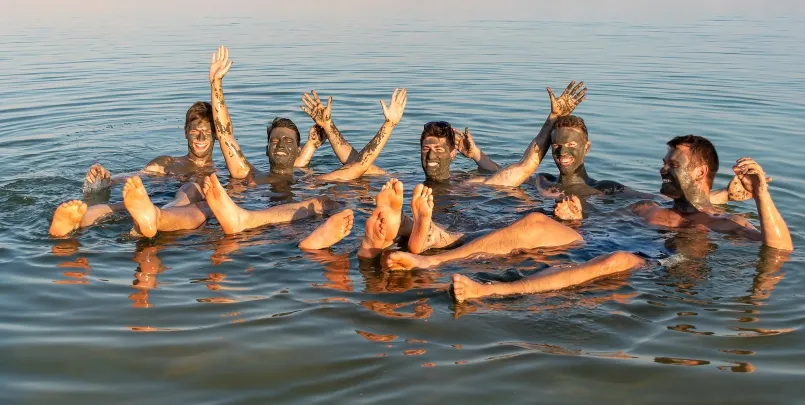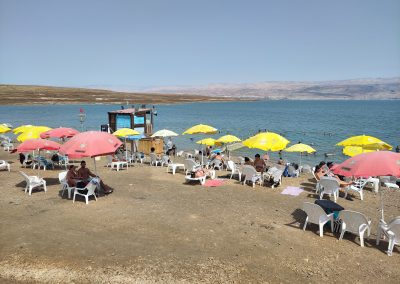
The Dead Sea is a salt lake bordered by Jordan to the east and the West Bank and Israel to the west. It lies in the Jordan Rift Valley, and its main tributary is the Jordan River.
As of 2019, the lake’s surface is 430.5 metres (1,412 ft) below sea level, making its shores the lowest land-based elevation on Earth. It is 304 m (997 ft) deep, the deepest hypersaline lake in the world. With a salinity of 342 g/kg, or 34.2% (in 2011), it is one of the world’s saltiest bodies of water – 9.6 times as salty as the ocean – and has a density of 1.24 kg/litre, which makes swimming similar to floating. This salinity makes for a harsh environment in which plants and animals cannot flourish, hence its name. The Dead Sea’s main, northern basin is 50 kilometres (31 mi) long and 15 kilometres (9 mi) wide at its widest point.
The Dead Sea has attracted visitors from around the Mediterranean Basin for thousands of years. It was one of the world’s first health resorts (for Herod the Great), and it has been the supplier of a wide variety of products, from asphalt for Egyptian mummification to potash for fertilisers. Today, tourists visit the sea on its Israeli, Jordanian and West Bank coastlines. The Palestinian tourism industry has been met with setbacks in developing along the West Bank coast due to the Israeli occupation.
The Dead Sea is receding at a swift rate; its surface area today is 605 km2 (234 sq mi), having been 1,050 km2 (410 sq mi) in 1930. Multiple canal and pipeline proposals, such as the scrapped Red Sea–Dead Sea Water Conveyance project, have been made to reduce its recession.
Openning Hours: 08:30 – 17:00

